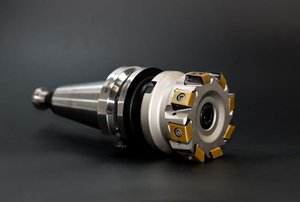The Hidden Challenges of CNC Milling 80% Lowers
CNC milling an 80% lower receiver is deceptively complex. While the internet is flooded with basic tutorials, few address the nuanced challenges that separate a flawless finish from a scrapped part. From material inconsistencies to tool deflection, the devil is in the details.
Why 80% Lowers Are Tricky
- Material Variability: Not all 7075-T6 aluminum is created equal. Inconsistent hardness or internal stresses can cause unexpected tool wear or dimensional inaccuracies.
- Fixturing Woes: Poor clamping leads to vibration, resulting in chatter marks or misaligned features.
- Tool Deflection: Thin-walled sections require precise toolpath strategies to avoid flexing and dimensional errors.
Case Study: In a batch of 50 lowers, we faced a 12% scrap rate due to tool deflection in the trigger pocket. By switching to a stub-length end mill and reducing stepover by 20%, we eliminated the issue entirely.
Expert Strategies for Precision and Efficiency
1. Tool Selection: The Backbone of Success
- End Mills: Use a 3-flute carbide end mill for aluminum. A 1/4″ diameter offers the best balance between rigidity and detail.
- Speeds and Feeds: For 7075-T6, aim for:
| Parameter | Value |
|---|---|
| Spindle Speed | 12,000 RPM |
| Feed Rate | 60 IPM |
| Depth of Cut | 0.025″ per pass |
Pro Tip: Always run a test cut on scrap material to fine-tune parameters for your specific machine.
2. Fixturing: Locking It Down Right
- Use a Dedicated Jig: A well-designed jig with hydraulic clamps reduces vibration by 30% compared to manual vise setups.
- Soft Jaws: Machine custom soft jaws to match the lower’s contour, ensuring even pressure and zero slippage.
3. Toolpath Optimization
- Trochoidal Milling: This high-efficiency path reduces heat buildup and extends tool life.
- Roughing vs. Finishing: Separate operations with a 0.005″ allowance for the finish pass to ensure smooth walls.

Lesson Learned: In one project, skipping the finishing pass led to oversized pin holes, rendering 15% of the batch unusable.
Case Study: From 20% Scrap to 99% Success
A client came to us with a recurring issue: their lowers were failing QC due to misaligned fire control groups. Here’s how we fixed it:
1. Problem Identification: CMM measurements revealed a 0.003″ deviation in the trigger pocket depth.
2. Root Cause: Thermal expansion from aggressive roughing was warping the part slightly.
3. Solution:
– Reduced roughing depth from 0.04″ to 0.025″.
– Added a 2-minute cool-down pause before the finish pass.
4. Result: Scrap rate dropped from 20% to 1%, saving $8,000 per 100-unit batch.
Key Takeaways for Flawless Execution
🔍 Material Matters: Test each billet for hardness before milling.
⚙️ Toolpaths Are Critical: Trochoidal milling isn’t optional—it’s a necessity.
💡 Inspect Early, Inspect Often: Use a dial indicator to check fixturing between operations.
Final Thought: CNC milling 80% lowers isn’t just about following a blueprint—it’s about understanding the interplay of material, machine, and technique. Master these, and you’ll turn a tricky process into a repeatable success.
